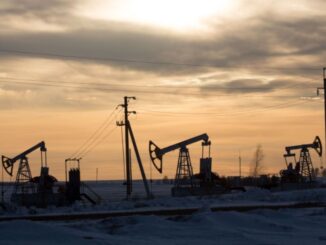
U.S. oil demand continues its upward trajectory—reaching a record high last week–while product inventories have fallen to the lowest levels in three years.
If the demand trend holds, oil prices have room to rise even more in the rest of the year, some analysts say.
Despite the fact that Hurricane Ida’s impact on the petroleum sector distorted data in this week’s inventory report by the U.S. Energy Information Administration, product supplied—EIA’s proxy for demand—continued to pick up pace.
Crude oil inventories declined by 1.5 million barrels for the week to September 3, with sizeable draws in fuel inventories as well, the EIA said in its weekly report. At 423.9 million barrels, crude oil inventories are below the five-year average for this time of the year.
Gasoline inventories fell by 7.2 million barrels for the period, compared with a draw of 1.3 million bpd for the previous week. In middle distillates, the EIA estimated an inventory draw of 3.1 million barrels for the week to September 3, a larger decline compared to the 1.7 million barrels draw for the previous week.
Finished motor gasoline supplied in the week to September 3 rose to 9.608 million barrels per day (bpd), up from 9.578 million bpd for the previous week.
This implied gasoline demand was “a healthy reading for the Labor Day weekend,” AAA said on Thursday.
On a four-week average, implied gasoline demand in the U.S. stood at 9.523 million bpd, up by 8.9 percent compared to the 8.742-million-bpd four-week average demand for those weeks in 2020, EIA data showed.
Four-week average jet fuel demand was up by 65.3 percent compared to last year, to 1.622 million bpd. Distillate demand was up by 11.2 percent to 4.126 million bpd.
“US fuel demand figures in the weekly EIA data showed a continued healthy pick-up. Gasoline demand of 9.52 million b/d on a four-week average is about 98% of corresponding 2019 levels, while distillate demand at 4.13 million b/d is at 105%,” Vanda Insights said in a note early on Friday, commenting on the EIA numbers.
John Kilduff, partner at Again Capital, commented for Reuters on the latest figures of implied gasoline demand in the United States:
“This gasoline demand number is sky high and that has been the pattern all season. We haven’t seen the seasonal decline we’ve seen post Fourth of July.”
Robust demand could couple with low inventories to support oil prices through the rest of the year, analyst at energy research service HFI Research wrote in Seeking Alpha.
Per EIA data, total liquids saw a draw of 10.4 million barrels for the latest reporting week, with total liquids stockpile now dipping below 2018 levels.
“On the demand side of things, US implied oil demand on a four-week basis continues to march higher despite this week’s hurricane data,” HFI Research said.
According to the analysts, if demand stays robust, U.S. total liquids inventories – including the Strategic Petroleum Reserve (SPR) – could dip below the 2010-2014 average.
“And so long as the fundamentals show continued inventory draws, oil prices will rally into year-end,” according to HFI Research.
But not all analysts are optimistic about U.S. gasoline demand. Some say that nearly $1 higher U.S. average prices at the pump and the end of the driving season would push motor gasoline demand lower in the coming weeks.
As of September 9, the national average price of a gallon of regular gasoline was $3.181, compared with $2.213/gallon at the same time last year, as per AAA data.
“GasBuddy gasoline demand data shows seasonal weakness while EIA’s proxy inexplicably shows continued strength that doesn’t match reality. Definitely a skeptic given the large declines in demand in Ida’s wake, especially in the Northeast,” Patrick De Haan, head of petroleum analysis for GasBuddy, tweeted on Thursday, commenting on EIA’s implied demand data.
By Tsvetana Paraskova for Oilprice.com



